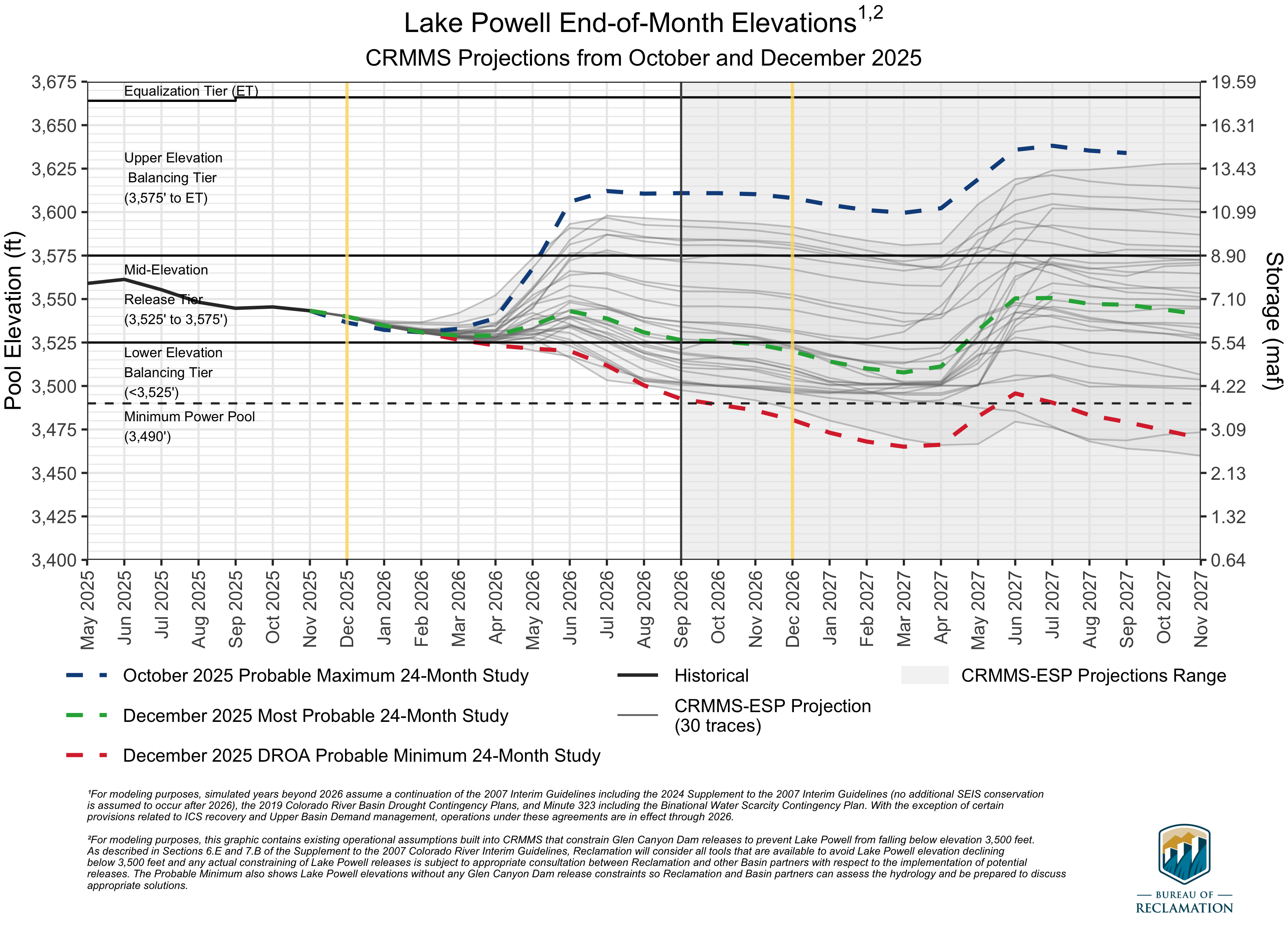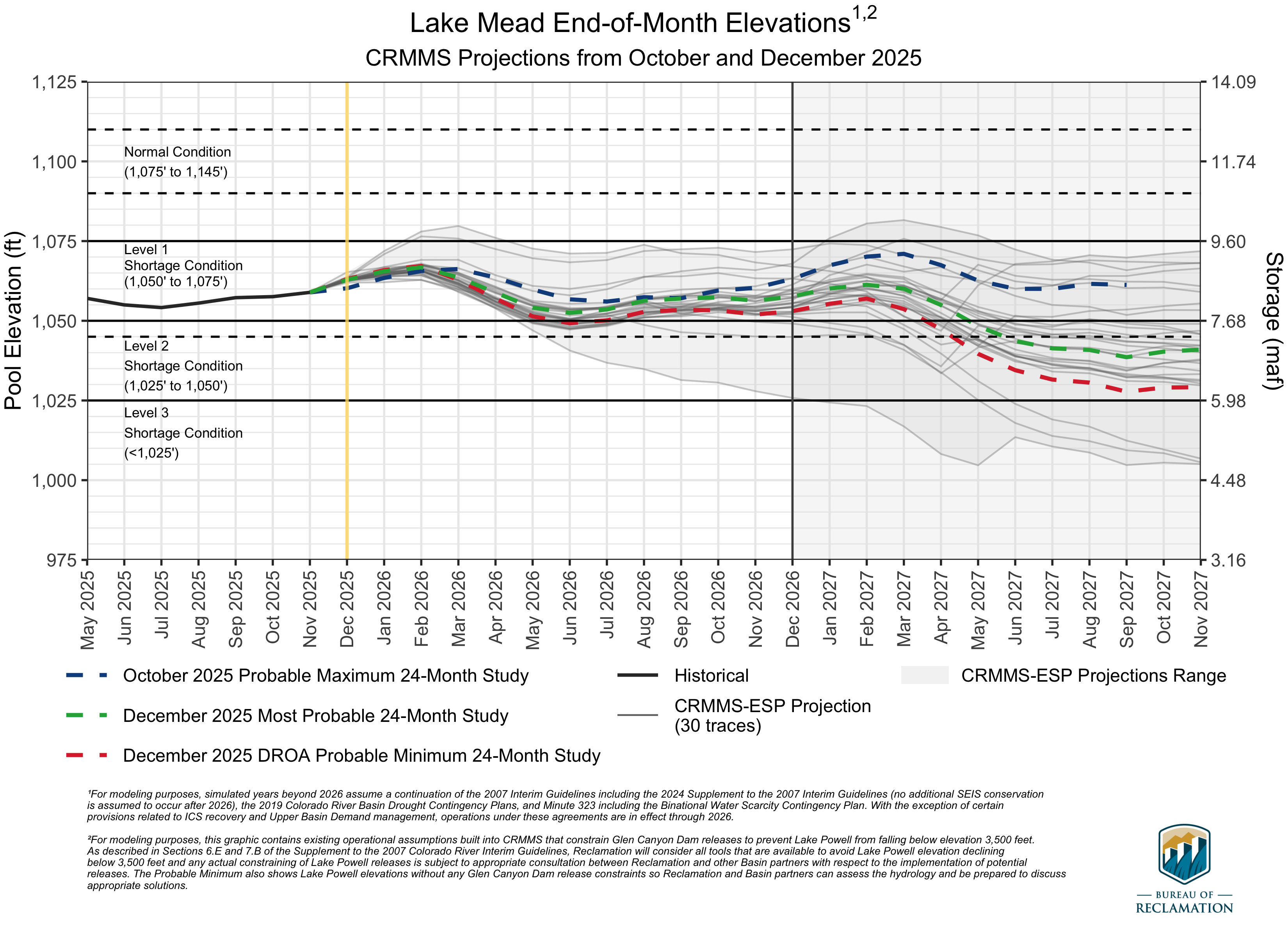2-Year Probabilistic Projections
- 24-Month Study Projections
- 2-Year Probabilistic Projections
- 5-Year Probabilistic Projections
Overview
The 2-Year Probabilistic Projection of future Colorado River system conditions are produced using the Colorado River Mid-term Modeling System (CRMMS) in Ensemble Mode. Projections extend out 24 months (the same period as the 24-Month Study) and are released monthly, typically by the 15th day of the month. CRMMS Ensemble Mode is driven by an ensemble of monthly unregulated streamflow forecasts developed by the National Weather Service Colorado Basin River Forecasting Center (CBRFC) using the Ensemble Streamflow Prediction (ESP) method. Results from CRMMS run with ESP are referred to as CRMMS-ESP.
- Initial Conditions: CRMMS is initialized with previous end-of-month reservoir elevations.
- Hydrology: Upper Basin inflows are 30 unregulated inflow forecasts traces produced by the CBRFC using the ESP method, which relies on observed temperature and precipitation from 1991-2020. Lower Basin inflows are the historical intervening flows from 1991-2020 that align with the ESP traces.
- Water Demand: Upper Basin demands are estimated and incorporated in the unregulated inflow forecasts provided by the CBRFC; Lower Basin demands are developed in coordination with the Lower Basin States and Mexico.
- Policy: 2007 Interim Guidelines, 2024 Supplement to the 2007 Interim Guidelines, Lower Basin Drought Contingency Plan, and Minute 323 are modeled reflecting Colorado River policies. For modeling purposes, simulated years beyond 2026 assume a continuation of the 2007 Interim Guidelines including the 2024 Supplement to the 2007 Interim Guidelines (no additional SEIS conservation is assumed to occur after 2026), the 2019 Colorado River Basin Drought Contingency Plans, and Minute 323 including the Binational Water Scarcity Contingency Plan. With the exception of certain provisions related to ICS recovery and Upper Basin demand management, operations under these agreements are in effect through 2026. Reclamation initiated the process to develop operations for post-2026 in June 2023, and the modeling assumptions described here are subject to change.
For more detailed information about the approach to these projections, see the CRMMS Ensemble Mode page. All modeling assumptions and projections are subject to varying degrees of uncertainty. Please refer to this discussion of uncertainty for more information.
Projections
The 2-Year Probabilistic Projections can be explored using an interactive visualization tool that depicts projected reservoir conditions produced by CRMMS-ESP and the 24-Month Study. The interactive visualizations for Lake Powell, Lake Mead, and other reservoirs’ projected conditions are linked below:
Lake Powell and Lake Mead end-of-month elevation charts are shown below. The charts show both the CRMMS-ESP and 24-Month Study results. The gray cloud represents the full range of the CRMMS-ESP projections, with individual gray lines showing each trace within the cloud.
For additional information or questions, please contact us via email at: ColoradoRiverModeling@usbr.gov.
To be notified when updated projections are available, please email ColoradoRiverModeling@usbr.gov with “Add Me” as the subject.
Last updated: 2025-02-14

